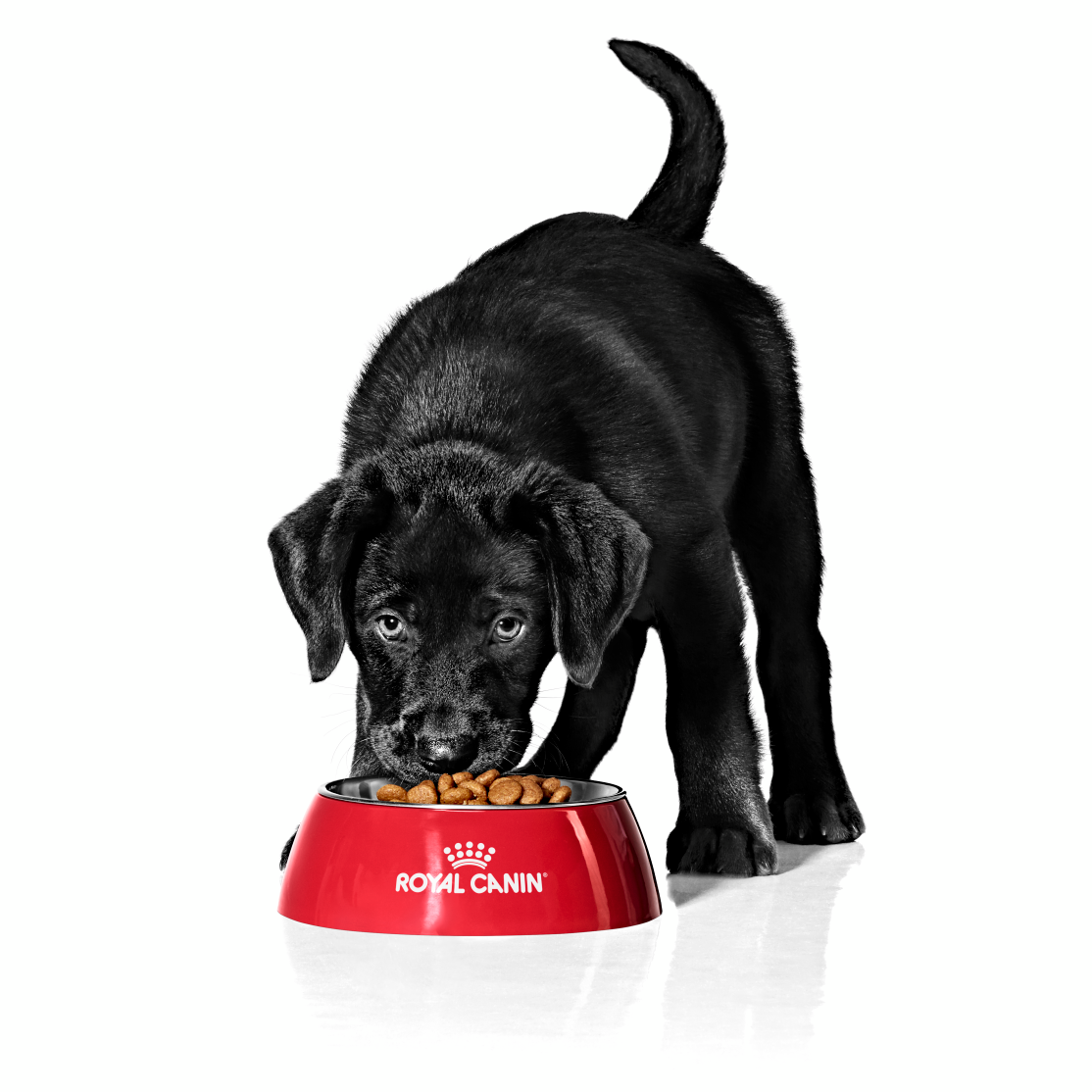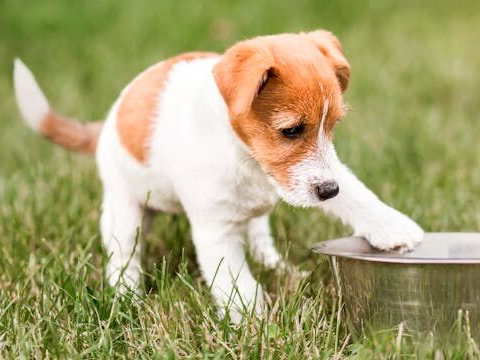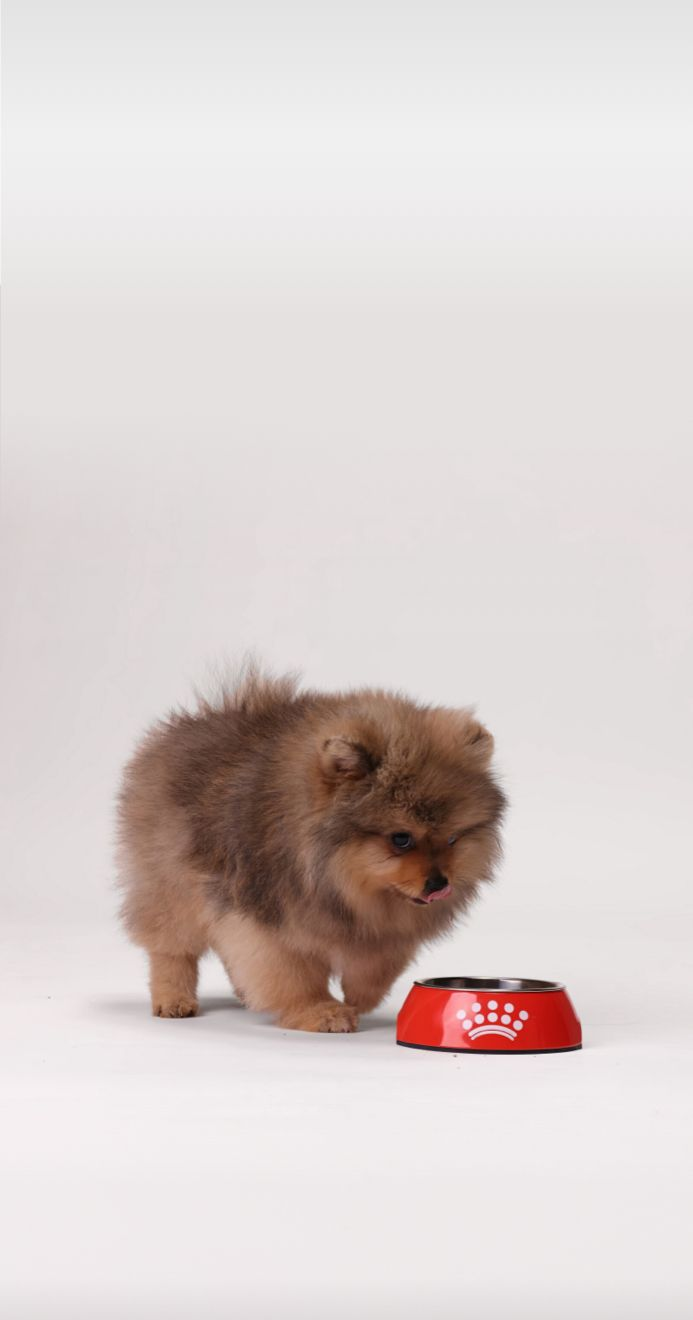
Puppy feeding and nutrition guide
In the early months of your puppy’s life, both you and your puppy experience exciting and significant changes. As your puppy grows towards adulthood, which depends on their size and can range from 8-24 months, they undergo substantial growth and adapt to new experiences. Bringing a new puppy home requires thorough research, especially regarding their diet.
This puppy feeding guide provides essential information to help you make the best choices for your puppy’s nutrition during their crucial initial months, ensuring they are set up for a healthy and long life.
Why your puppy’s diet is so important
Puppies grow fast, their bodies quickly matching those big ears and paws. However, inside, their digestive and immune systems are still developing, so their food needs are different from adult dogs. What they eat can help set the stage for their future health. Choosing puppy food designed for their needs helps them grow, play, and socialize while getting all the right nutrients.

How do puppies’ needs differ from those of adult dogs?
Puppies have different dietary needs than adult dogs or humans. While they grow, play, and learn, they require specific nutrition to support their developing bodies. Their food should be more energy-dense to fuel their rapid growth and have the right balance of calcium and phosphorus for healthy bone development. Since puppies can have a difficult time regulating their food intake, it's important for you to control their portions. Eating too much and growing too fast can lead to obesity and various health issues, affecting their quality of life, including bone and joint problems and digestive disorders.
How do your puppy’s healthy development needs change?<br>
To ensure your puppy's diet supports their growth with all the necessary nutrients, follow feeding guidelines based on weight and age. If you're unsure, consult your vet.
Birth to 1 month
2 to 4 months
4 to 7 months
10 months to adulthood
Birth to 1 month
2 to 4 months
4 to 7 months
10 months to adulthood
How much should you feed your puppy?
As your puppy grows, their feeding schedule will change.
During weaning, divide daily meals into at least four portions. For small breed dogs, stick to atleast four meals a day until they're four months old, then switch to atleast two meals a day until ten months. Larger breeds should also have at least three meals a day until they're six months old, then switch to atleast two meals a day until a year.
It's important to note that dogs don’t need dietary variety like humans do. They thrive on a consistent food routine, which can start from their early months: same food, same bowl, same times—every day.
How a puppy’s feeding schedule changes
What is mixed feeding for puppies?
Combining wet food and dry kibble can offer benefits for your puppy. Wet food provides extra moisture for hydration, while dry kibble contains concentrated nutrients and can also help with oral health as the kibble can have a "brushing effect" on the teeth.
How much should your puppy drink?
Your puppy's water requirements depend on factors like their diet (dry, wet, or mixed), activity level, breed, size, and environmental temperature. Ensure they always have access to fresh water and clean their bowl regularly to prevent parasites. Opt for ceramic, glass, or stainless-steel bowls as plastic may have a scent that bothers sensitive canine noses. If possible, place several water bowls in quiet areas around your home to make it easy for your puppy to stay hydrated.
Getting into good feeding habits
Resist the temptation to share your food with your puppy, no matter how pleading their eyes may be!
While humans can eat a variety of foods, many human foods can harm puppies. Additionally, feeding them table scraps can lead to bad habits like begging, which are difficult to break. Stick to their specially formulated puppy food for their health and behaviour.
The science behind ROYAL CANINⓇ puppy nutrition
At Royal Canin, we specialize in promoting puppy health through tailored nutrition, recognizing that each puppy has unique needs. Our focus isn't just on providing energy but also on supporting overall well-being. We offer an optimal blend of nutrients that help in building and maintaining healthy cells, supporting immunity, healthy growth, digestion, joint, and age-related problems.
Puppy feeding FAQs
They should not—puppies need specially developed food that contains all the nutrients and energy needed to support their growth.
Puppies shouldn’t be eating human foods anyway, but some can be particularly harmful. It’s extremely important to avoid giving them chocolate, artificial sweeteners, grapes, garlic, onions, dairy products, nuts and fatty foods. The best way to do that is by sticking to a specially developed puppy food.
Dogs are considered omnivores. Their diet needs to provide the right balance of energy, protein, amino acids, and vitamins for their health. That's why it's best to feed them specially formulated food designed for their breed, size, and life stage.
Dogs may be man’s best friend but they shouldn’t share the same eating habits. Feeding them specially formulated dog food, whether wet or dry, ensures they get the right nutrition. Avoid giving them extra treats or leftovers from human meals outside of fixed mealtimes to prevent obesity and discourage bad behaviour like begging at the table.
Welcoming your puppy into their new home is an exciting time for everyone involved. Getting their food right from the beginning can make their transition smoother and ensure a stress-free start to your life together. Providing optimal nutrition tailored to their life stage from the beginning will set them up for a healthy, energetic life with you.

Find the right product for your pet
Answer a few questions about your pet
Get their tailored food recommendation
Keep your pets diet always updated

